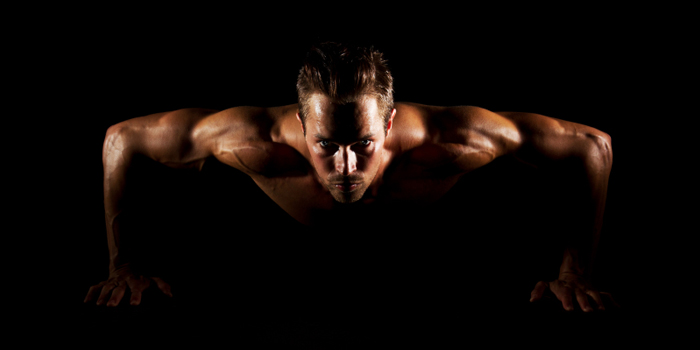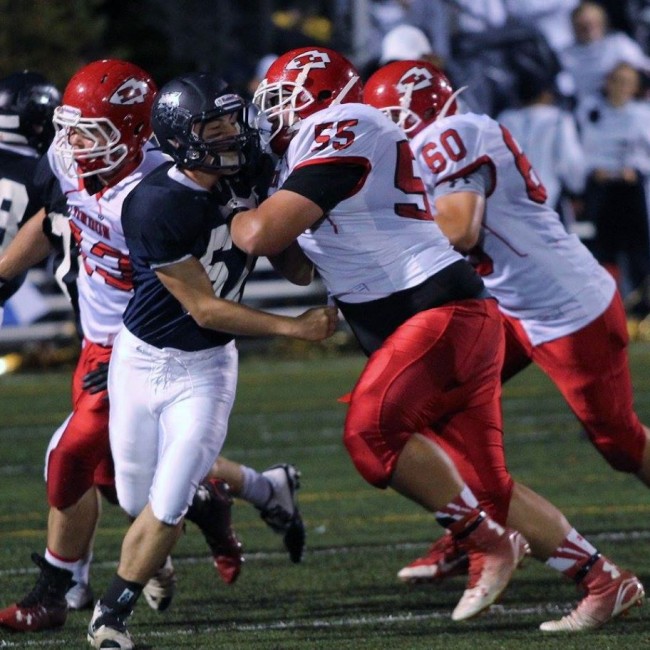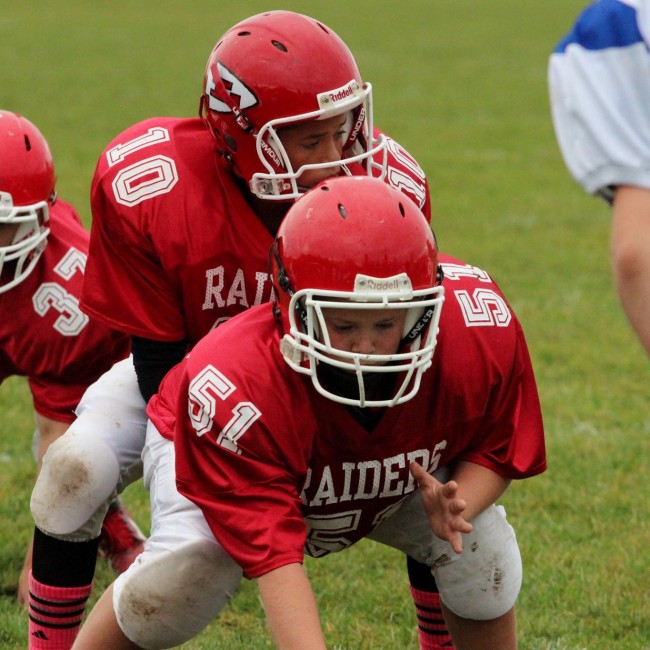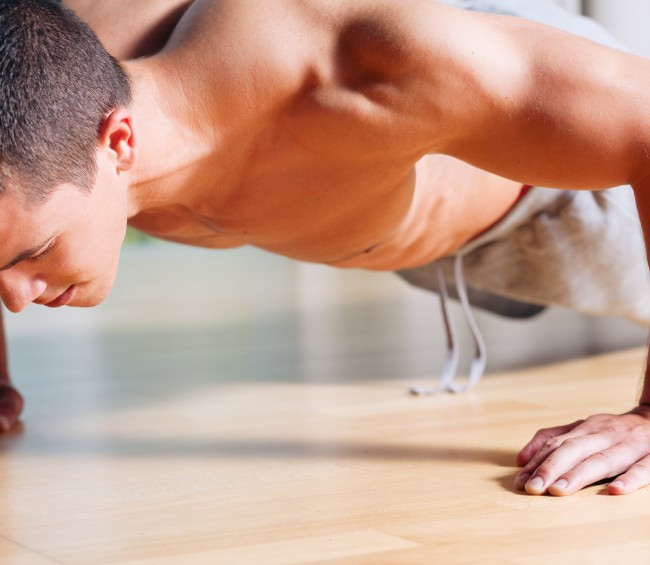
This article is a call to all coaches and physical education instructors at the high school level and younger. I'm making a case for never using the push-up as a punishment tool or throw away exercise again. The push-up is a highly technical skill that needs to be treated as such and developed in a way that applies to the overall development of an athlete.
I'll begin by examining this from a purely motor learning perspective. Your central nervous system (CNS) is wired to put a premium on patterning movement. It only works with the information that you give it. Look at the push-up for what it is at the most basic level. It is a great test of your ability to have an organized neutral spine and shoulder position and move up and down in a horizontal plane. Unfortunately, it has been tossed into the world of punishment exercises and has become just that thing you do for warm ups. We end up seeing saggy backs and internally rotated, impinged shoulders with the elbows pointed straight sideways.
The first problem with this position is the hyperextension in the lumbar spine. If we extrapolate this position to the football field or basketball court, what position will this athlete be in when we ask him to jump, land or set up to tackle an opponent? He will be in this exact hyperextended position, which is the mechanism for chronic low back pain and acute spondylolisthesis (fracturing of the posterior elements of the spine), especially if the athlete receives a forceful impact in this position. If he sets up in this spinal position in his push-up, I can almost guarantee that he will set up in this position when he deadlifts and squats.
The second problem with this position is the internally rotated shoulder position while the shoulder is in flexion. Basic mechanics of the shoulder dictate that if you're in flexion (any time your arm is moving above your waist), the shoulder needs an external rotation component to keep the capsule in a tightly wound position, keep the rotator cuff musculature in the proper position to keep the shoulder tightly packed in the socket, and keep both from getting impinged in the space between the humerus and the clavicle. This is why we keep the elbows in tight while bench pressing or use the “break the bar” cue that we're all so familiar with.
In the push-up, the cue is to screw the shoulders into the ground or spin the pits of your elbow forward. This rotation must be set before you descend. It can't be reclaimed very effectively once you load the shoulder and head to the floor. If we extrapolate the shoulder position to the football field or the wrestling mat or even the bench press, what will we see? How do you ever expect your offensive linemen to block effectively in that elbows-out position? What will happen to the wrestler who pushes himself off the mat with that shoulder position after he gets broken down? If you take a young athlete and let him perform his push-ups in a crappy position, it is the position that he will adopt on the field. As the old saying goes, you will always fall to the level of your training. The football player won't be able to block effectively because you can't create any power from that position. The wrestler will end up on his back because he left his elbows out and received a deep half nelson.
If I catch you as a coach yelling at a kid for being in a bad position on the field but watch you coach him in training and see you allow him to do hundreds of crappy push-ups, whose fault is it? Who should really be getting yelled at? You have taught your athlete to be in that position in training, so he will be there when it counts.
When I get into pointless arguments with coaches, I often hear things like, “What is the big deal? They're just push-ups.” This statement has been said to me more than once and it drives me insane. A push-up teaches the correct spine and shoulder position to produce force in the horizontal plane. It is also a great precursor to teaching the bench press. The bench press should really look like a push-up on your back. All the cues that apply to a proper shoulder position in the bench press apply directly to the push-up and vice versa.
In my humble opinion, a young athlete should not be bench pressing until he can show me some level of mastery in the push-up. When I say mastery, I mean three sets of 20 push-ups where each rep looks exactly the same. He can rest as much as needed between sets. At this point, I feel that he has enough strength in the shoulder girdle to begin handling a loaded barbell. There is a certain level of tendon and ligament strength that I feel needs to be achieved before a young athlete can begin using the bench as a tool to develop upper body strength. If a kid can't do 20 push-ups properly, I would much rather see him do 20 sets of one perfect push-up than 20 reps of crappy push-ups. I'll make an argument here for even another step before introducing the bench press to a young athlete—the floor press.

Photo courtesy of Chris Whitacre
I'm really starting to understand the value of the floor press in an athlete's development. In this day and age, with all the sitting and use of video games and electronics (the average American is on his or her smart phone for two hours a day), many of the young athletes I work with are very stiff in the anterior shoulder capsule, which makes it very difficult for them to bench press safely without the shoulder translating forward as the bar comes to the chest. Not only does it allow for a tremendous increase in horizontal pressing strength, it is a great connecting point between the push-up and a bench press until the athlete improves the range of motion in the shoulder necessary to safely bring the bar to the chest. It is also a great exercise for athletes coming back from shoulder injury or surgery because it puts them in a stable environment to increase shoulder strength and stability. The floor press becomes a very valuable tool for overloading the horizontal press for upper body strength development while minimizing the risk to the athlete.
For some of your athletes, they may never really need to do a regular bench press. You could almost argue that unless a kid is intending to enter a powerlifting meet, a full bench press may never be necessary.
In summary, athletic development is a long process that starts with the ability to maintain control of your own body weight and progressively challenges that ability with speed, respiratory demand and load. If steps are skipped, your athletes will run into plateaus and injuries in training before they reach their potential. Too many coaches are obsessed with absolute strength in their athletes and only use the traditional forms of the basic exercises. They forget what is really important for proper development. The point of the weight room is to create and reinforce optimal positions and mechanics with a variety of stresses, with the ultimate goal of optimizing performance on the field. If a kid is in a bad position in the weight room, he will not be in a good position when it matters.
Travis Jewett is a chiropractor, CrossFit Level 1 trainer and member of the MobilityWOD staff and CrossFit Mobility Seminar staff. He travels throughout the United States, Canada and overseas teaching CrossFit Mobility certification. He also maintains a private practice in Iowa. Travis trained and competed in powerlifting recreationally for 16 years. While never hitting any elite totals, he still understands the importance of a proper squat, bench and deadlift.












3 Comments